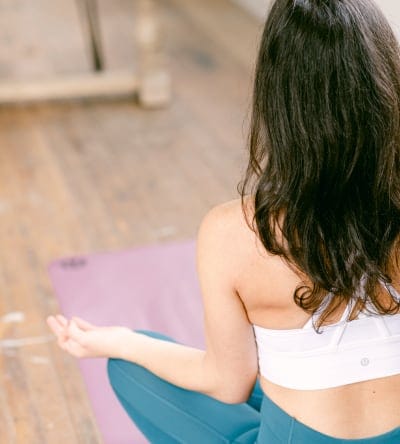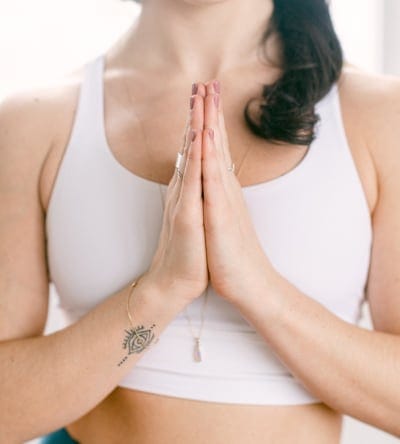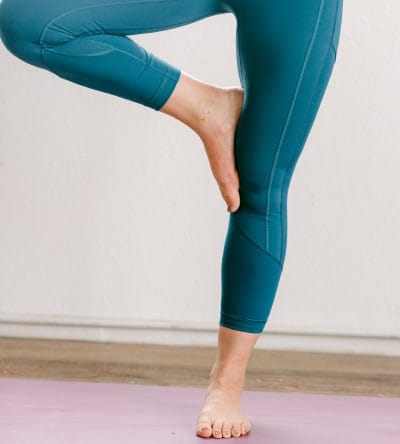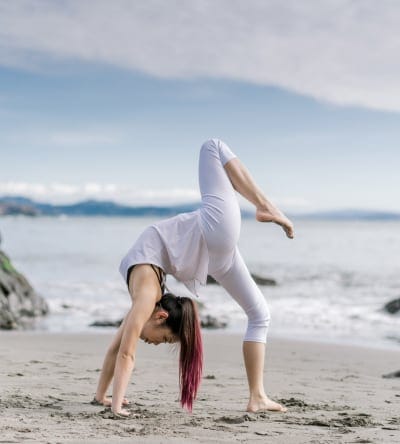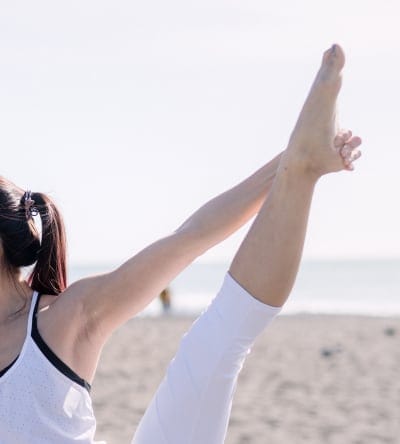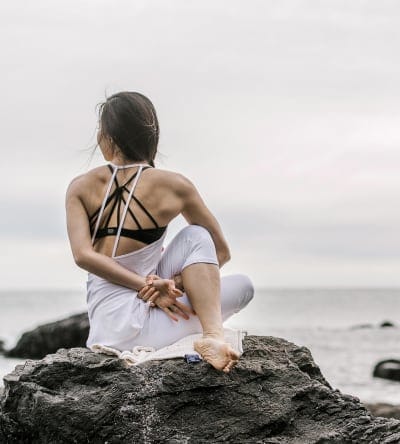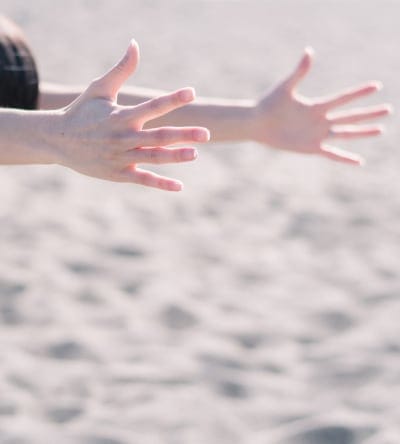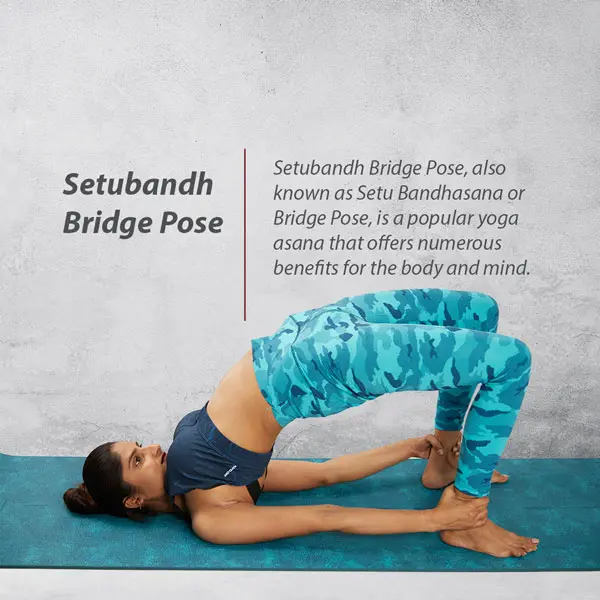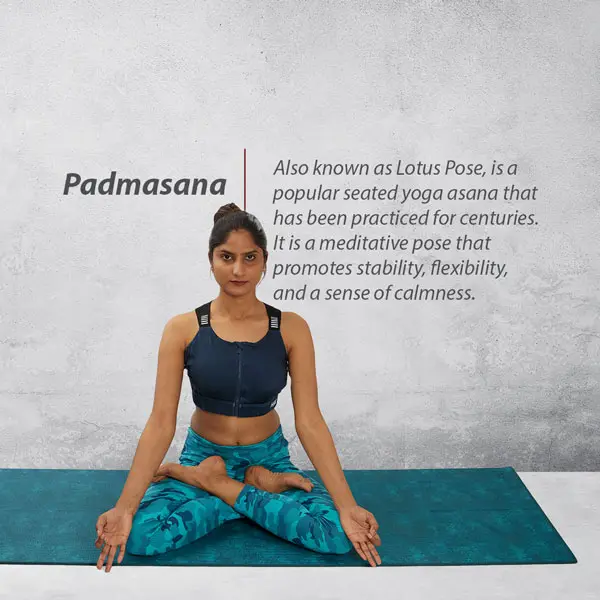10 Halasana Benefits – (Plow Pose / Plough Pose), How to steps
(Sanskrit: हलासन; IAST: halāsana)
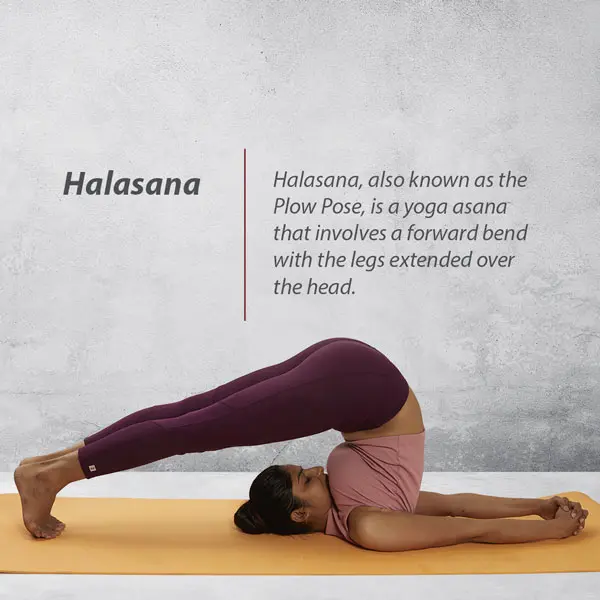
Introduction to Ardha Halasana, Halasana Benefits on weight loss, back pain and other yoga health benefits
Halasana, commonly referred to as Plow Pose or Plough Pose, is one of the esteemed traditional yoga postures celebrated for its extensive physical and mental benefits and even improves nervous system.
The name Halasana is derived from the Sanskrit terms “Hala,” meaning plow, and “Asana,” meaning pose. This nomenclature is inspired by the pose’s resemblance to a traditional Indian plow.
In Halasana, the practitioner experiences a physical and mental journey. It begins with a gentle transition from lying flat on the back to slowly rolling the legs over the head until the toes touch the ground, symbolizing a plow’s movement. This transition not only stretches and strengthens the body but also nurtures a state of inner reflection and surrender, illustrating the pose’s deeper yogic significance.
Exiting Halasana is done with equal mindfulness, by gradually rolling the back down to the floor and easing into a flat position. To balance the intense stretch of Halasana, it’s recommended to perform a counterpose, such as Matsyasana (Fish Pose). This practice ensures a balanced and holistic yoga session.
Halasana is more than a physical exercise; it’s a form of meditation in motion that encourages introspection and the art of letting go. This pose teaches practitioners to trust the process, echoing a philosophy that extends well beyond the yoga mat into everyday life.
It is crucial to remember that each individual’s body is unique. Practicing within personal limits and listening to one’s body is essential for a safe and beneficial yoga experience. For those new to yoga or with specific health conditions, seeking guidance from a qualified yoga instructor is highly recommended to ensure the practice is both effective and safe.
Comparison between Ardha Halasana & Halasana
Step-by-step Video Guide to Halasana (Plow Pose / Plough Pose)
Note: It’s important to listen to your body and not force yourself into any pose. If you have any medical concerns or pre-existing conditions, it’s advisable to consult with a healthcare professional before attempting new exercises or yoga asanas.
Halasana (Plow Pose) step-by-step pose instructions:
Below are steps to perform Halasana for beginners
Step 1
Start by lying flat on your back on a yoga mat or a comfortable surface.
Step 2
Keep your arms by your sides with your palms facing down.
Step 3
As you inhale, engage your abdominal muscles and lift your legs off the ground, raising them towards the ceiling.
Step 4
Support your hips and back with your hands and continue to lift your legs up and over your head, aiming to touch your toes to the ground behind you.
Step 5
Keep your legs straight and your feet flexed.
Step 6
Maintain a steady and relaxed breathing pattern as you hold the pose.
Step 7
Hold the pose for as long as it is comfortable for you, gradually working up to longer durations.
Step 8
To release the pose, slowly and mindfully roll your spine back down onto the mat, one vertebra at a time.
Step 9
Once your legs are back on the ground, relax in Savasana (Corpse Pose) for a few breaths.
10 Benefits of Plow Pose / Halasana Yoga Asana, Halasana benefits for overall well-being:
Halasana (Plow Pose) is a well-regarded yoga asana known for its numerous health benefits for overall well-being. While it’s important to remember that yoga poses are not a cure for diseases and should not replace medical treatment, regular practice of Halasana can contribute positively to managing or alleviating certain health issues. Here are some conditions that may benefit from practicing Halasana:
- Stress and Anxiety: The inversion and stretching involved in Halasana can help reduce stress and promote relaxation, which is beneficial for those suffering from anxiety.
- Back Pain:Halasana benefits for back pain starts by stretching the spine. Halasana can help alleviate tension in the back muscles, potentially providing relief from mild back pain.
- Digestive Problems: The pose can stimulate the abdominal organs and improve digestion, helping to alleviate issues like constipation.
- Halasana and its role in reducing Insomnia: The calming effect of Halasana can aid in better sleep, making it beneficial for individuals with insomnia.
- Poor Circulation: As an inversion, Halasana can help improve blood circulation, particularly to the brain, which can be invigorating and energizing.
- Flexibility: Regular practice can increase spinal flexibility, which is beneficial for overall body movement and posture.
- Halasana benefits for women’s health / Menopause Symptoms: Some women find relief from menopausal symptoms through a regular yoga practice that includes poses like Halasana.
- Thyroid Regulation: The throat stimulation while in the pose is believed to benefit the thyroid gland, although this should not replace medical treatment for thyroid conditions.
- Strengthening the Immune System: By improving overall health and circulation, Halasana can contribute to a stronger immune system.
- Reduced Fatigue: The pose can help alleviate fatigue, both mental and physical.
It’s important to approach Halasana and any yoga pose with caution, especially if you have pre-existing health conditions. Always consult with a healthcare professional before starting any new exercise regimen, and consider seeking guidance from a qualified yoga instructor to ensure you’re practicing safely and effectively.
Similar asanas to Halasana
Halasana, also known as the Plow Pose, is a yoga asana known for its benefits in stretching the spine and shoulders. If you’re looking for similar asanas that offer comparable benefits, here are some suggestions:
-
Sarvangasana (Shoulder Stand): This pose is often performed before Halasana and involves lifting the legs and hips straight up, balancing the body on the shoulders. It’s excellent for strengthening the shoulders and back, and it improves circulation.
-
Setu Bandhasana (Bridge Pose): This asana involves lifting the hips while keeping the feet and shoulders on the ground, forming a bridge-like arch with the body. It’s great for stretching the spine, chest, and neck, similar to Halasana.
-
Urdhva Dhanurasana (Upward Bow or Wheel Pose): This is a more challenging backbend that strengthens the back, arms, and legs, and increases flexibility in the spine, much like Halasana.
-
Karnapidasana (Knee-to-Ear Pose): This pose is a variation of Halasana where the knees are bent and brought down to touch the ears. It provides an intense stretch for the back and is beneficial for the spine.
-
Adho Mukha Svanasana (Downward-Facing Dog Pose): While this pose is a standing asana, it shares the benefit of stretching the spine and strengthening the shoulders, similar to Halasana.
-
Matsyasana (Fish Pose): Often performed as a counterpose to Halasana, Matsyasana stretches the front part of the neck and the chest, providing a balance to the spine stretching in Halasana.
-
Viparita Karani (Legs-Up-The-Wall Pose): This restorative pose involves lying on the back with legs extended vertically up against a wall. It’s a milder inversion compared to Halasana and is excellent for relaxation and reducing stress.
These asanas, with their focus on spinal flexibility, inversion, and stretching, complement the benefits of Halasana and can be integrated into a yoga routine for a balanced practice. Remember to approach each pose according to your comfort level and make modifications if necessary.
Experienced & Certified Yoga Instructors at Renuka Yoga Studio:
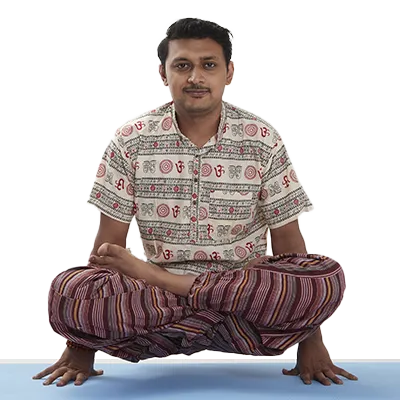
Chetan Rajput
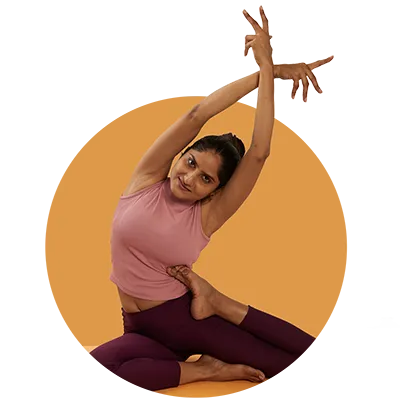
Renuka Chauhan
See what clients say about us... Google
Precautions to take while doing Halasana Yoga Asana:
Halasana (Plow Pose) is generally considered a beneficial yoga pose, especially for its ability to stretch the spine and improve flexibility. However, like any physical activity, certain risks are associated with it, particularly when not performed correctly or if practiced by individuals with certain health conditions. It’s important to note that Halasana does not directly cause diseases, but it can exacerbate certain conditions or lead to injuries if not practiced with caution.
Here are some health conditions that could be adversely affected by practicing Halasana:
-
Halasana and its impact on shoulder and neck pain: Since Halasana puts significant pressure on the neck, individuals with neck injuries or chronic neck conditions should avoid this pose. It can exacerbate neck pain and potentially lead to further injury.
-
Halasana and its impact on blood circulation: Inversions like Halasana can cause a temporary increase in blood pressure. Those with uncontrolled high blood pressure should therefore avoid this pose.
-
Back Problems: If you have a herniated disc or other severe spinal issues, Halasana can worsen these conditions due to the intense spinal flexion it involves.
-
Glaucoma or Eye Conditions: Inversions increase intraocular pressure, so those with glaucoma or other eye conditions should avoid Halasana.
-
Halasana benefits for heart health / Heart Disease: People with heart conditions should be cautious with inversions, including Halasana, especially if they have been advised to avoid strenuous activities.
-
Acid Reflux or Hiatal Hernia: The position of the body in Halasana may exacerbate symptoms of acid reflux or hiatal hernia.
-
Osteoporosis or Osteopenia: Those with weak or brittle bones should be cautious, as the pose could put undue stress on the spine and neck.
-
Menstruation: Traditional yoga practice often recommends avoiding inversions like Halasana during menstruation, although this is subject to individual preference and belief.
It’s crucial to consult with a healthcare professional or a qualified yoga instructor before practicing Halasana, especially if you have any health concerns or pre-existing conditions. They can provide guidance on whether this pose is safe for you and suggest modifications or alternatives if necessary. Remember, the key to a safe and beneficial yoga practice is to listen to your body and respect its limits.
Frequently Asked Questions – FAQs about Halasana (Plow Pose)
Various Yoga services that we offer in Gurgaon
